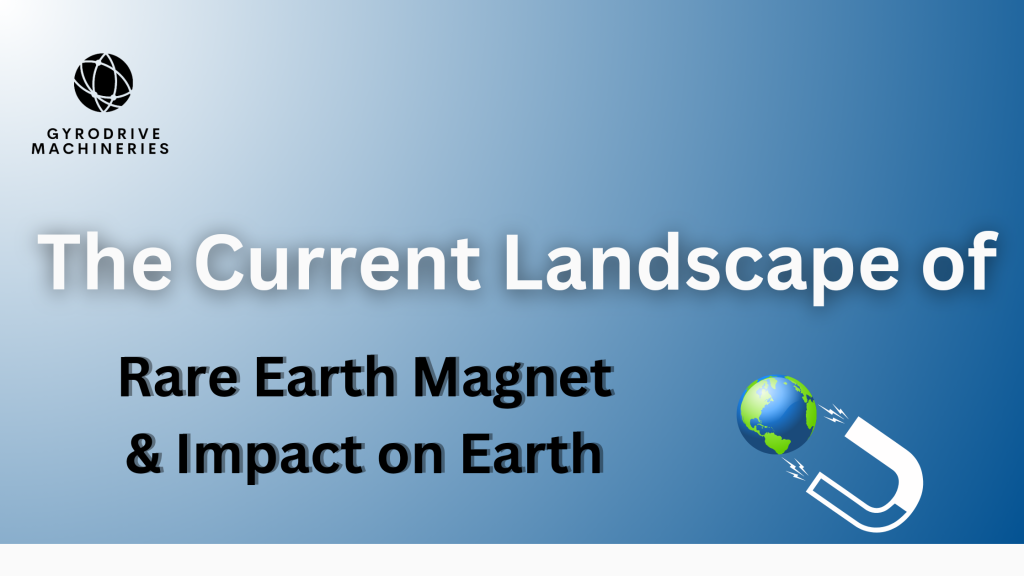The Current Landscape of Rare Earth Magnet and Impact on Earth
Welcome, fellow curious minds, to the magnetic rollercoaster where we explore the twists and turns of the rare earth magnet availability landscape.
Rare earth magnets are powerful permanent magnets made from alloys of rare earth elements. The term “rare earth” is somewhat misleading because these elements are not actually rare in abundance; however, they are often found in low concentrations in the Earth’s crust, making their extraction and processing challenging.
There are two main types of rare earth magnets:
Neodymium Iron Boron (NdFeB) Magnets:
NdFeB magnets are the most widely used type of rare earth magnets. They are composed of neodymium, iron, and boron and are known for their exceptional strength. NdFeB magnets have replaced other types of magnets in many applications in modern products that require strong permanent magnets, such as electric motors in cordless tools, hard disk drives, and magnetic fasteners.
Samarium Cobalt (SmCo) Magnets:
SmCo magnets are another type of rare earth magnet. They are composed of samarium, cobalt, and sometimes other rare earth elements. SmCo magnets are known for their high magnetic strength and ability to operate at high temperatures, which makes them suitable for certain specialized applications.
The Magnet Search: Supply and Demand
Growth and development in technology affect the demand in this sector. As the demand for rare earth elements continues to grow, effective recycling methods for rare earth magnets become crucial. Developing efficient ways to recycle and recover these materials from end-of-life products is a challenge that can contribute to a more sustainable supply chain.
The China Problem: A Magnet Monopoly?
China has historically dominated the global production of rare earth elements, which are essential in the manufacturing of rare earth magnets. This dominance has raised concerns about the security of the supply chain for these critical materials. China, the ruling champ in rare earth production, has been leading the charge. But, here’s the twist: is it a monopoly? Not exactly. While China holds the crown, other players are stepping onto the stage, diversifying the global magnet market.
Sustainability Attention: Greening the Magnet Scene
As sustainability takes center stage in every industry, the rare earth magnet world is no exception. Manufacturers are now putting on their eco-friendly product development, exploring sustainable practices in mining and production. It’s like a green revolution, where magnets are not just powerful but also environmentally conscious. Due to concerns about supply chain security and environmental issues, there has been ongoing research and development to find alternative materials for magnets. Scientists and engineers are exploring new magnet technologies and recycling methods to reduce dependence on traditional rare earth magnets.
Impact of Rare Earth Magnet on Earth
One notable problem with using rare earth magnets, particularly neodymium magnets, is their environmental impact. The extraction and processing of rare earth elements can result in habitat destruction, water pollution, and increased energy consumption. Additionally, the disposal and recycling of products containing these magnets pose challenges, as their composition makes recycling difficult. There’s also a geopolitical aspect, as a significant portion of the world’s rare earth elements comes from a few countries, leading to supply chain vulnerabilities.
The challenges associated with rare earth magnets include:
1. Environmental Impact: The extraction and processing of rare earth elements can lead to habitat disruption, water pollution, and increased energy consumption.
2. Supply Chain Dependence: A significant portion of the world’s rare earth elements comes from a few countries, creating a geopolitical and economic dependency for industries relying on these magnets.
3. Recycling Difficulty: Rare earth magnets are challenging to recycle due to their composition. Developing efficient recycling methods is crucial to reduce waste and minimize environmental impact.
4. Cost Fluctuations: The prices of rare earth elements can be volatile, affecting the overall cost of products that use these magnets.
5. Alternative Material Exploration: Research is ongoing to find alternative materials for magnets that are less environmentally harmful and economically viable.
Rare earth magnets, particularly neodymium magnets, are commonly used in electric motors due to their strong magnetic properties. While they enhance motor performance, their production and use come with environmental concerns. However, in terms of motor impact, these magnets contribute to more efficient and powerful motors, especially in electric vehicles and various electronic devices. The challenge lies in balancing technological advantages with environmental considerations.
To know more about our Product Design and Development click here


Leave a Reply